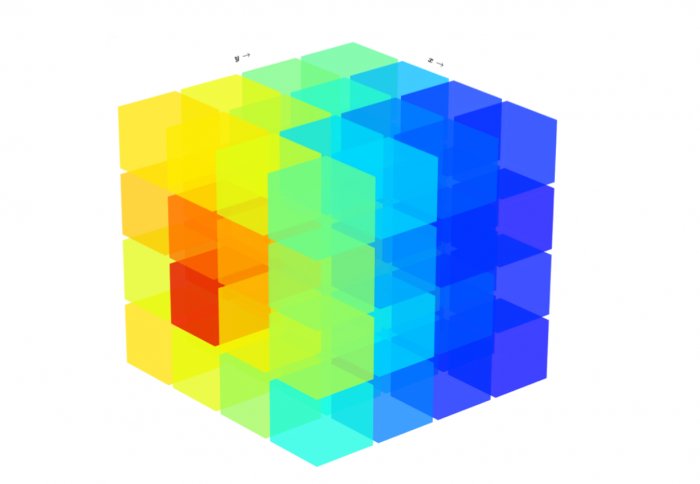Imperial team develops devices to detect nuclear materials used in dirty bombs

nFacet 3D allows detection and localisation of radioactive materials
Imperial physicists Dr Antonin Vacheret and Dr Sakari Ihantola have developed two devices for detecting nuclear materials.
The devices, currently being commercialised, are designed to make border security checks more effective, and also have application in environmental assessments.
Radiological material falling into the wrong hands is a constant security concern for governments around the world. Border agencies must scan incoming vehicles and freight for radioactive material, which is a challenging task as huge volumes of both move across borders each day.
I visited Dr Antonin Vacheret’s lab to find out more about the threats of radiological materials, and how his devices make detection more efficient.
First off, why might someone be smuggling radiological materials into a country?
The nightmare scenario would be terrorists deploying a dirty bomb; an explosive device that has radiological material attached to it for dispersal upon detonation.
It’s important to point out that the actual number of fatalities from such an event would probably be lower than most imagine – not many more than killed by the explosion itself – the major impact would be psychological and economic.
Have there been any incidents to date?
Thankfully not, although it is thought that ISIS had ideas. Back in March 2016, NPR reported that ISIS members had been following a Belgian nuclear researcher with the aim of kidnapping him to obtain the required materials.
One issue is that radiological materials are used in a variety of industrial and medical applications; the same isotopes used for life-saving medical treatments can also be used in a dirty bomb. The U.S. think tank, Nuclear Threat Initiative, reported some 514 incidents of radioactive material being lost, stolen, or is otherwise out of regulatory control from 2012-2016.
So the movement and detection of such materials is extremely important for border agencies, and is a very real challenge.
Tell me a bit about your new devices.
We’ve developed two devices, the nFacet B and the nFacet 3D. The nFacet B model is portable, battery powered, with high neutron detection efficiency. The nFacet 3D is larger, around 15kg in weight, and provides additional 3D neutron direction measurement for source localisation.
Both machines are based on new scintillator materials for neutron detection, and advanced analysis algorithms based on machine learning developed in my lab.
What’s special about these devices and why is an improvement on the current situation?
With incoming vehicles, the most usual situation is that they pass one by one through a gateway with neutron detectors. The first problem is that this is relatively slow, the second problem is that they tend to give false-alerts due to fluctuations in background radiation.
Our scintillator material allows incredibly sensitive detection, but our units are relatively small. The smaller of the two, the nFacet B, is designed to be portable. This allows border agents to roam among vehicles for faster detection.
The nFacet 3D is larger and not something an agent can carry, but the real benefit of this is that it gives 3D source localisation. So it can be used in an open space, help you pinpoint where the source is, and also prevent false-alarms. Examples of where this will be particularly useful would be events like the Olympic Games, or to reinforce capabilities at borders
You were recently awarded a NuSec grant. What was this used for?
We used this to further develop the software for the detectors. The software uses an algorithm to tell the user the source type and its location, which is calculated by the angle of detection.
It was developed through machine learning. We basically subjected our nFacet 3D detector to reams of example radiological materials at known locations. This allowed our programme to learn the detection characteristics of the different events, and recognise them again with extremely high accuracy.
What’s next for nFacet?
We’ve been working with potential users to make our final product which is very close to completion. Currently we are looking for possibilities to demonstrate the capabilities of the detector in real operational environment. These demonstrations could include mounting the detector in helicopter for large-area radiation surveillance or installing the detector at a border crossing point.
Dr Antonin Vecheret is Lecturer in Experimental Astroparticle Physics, and Dr Sakari Ihantola is a Research Associate, both within the High Energy Physics group at Imperial College London. More information on their company nFacet can be found on the company website.
Article text (excluding photos or graphics) © Imperial College London.
Photos and graphics subject to third party copyright used with permission or © Imperial College London.
Reporter
Max Swinscow-Hall
Institute for Security Science & Technology